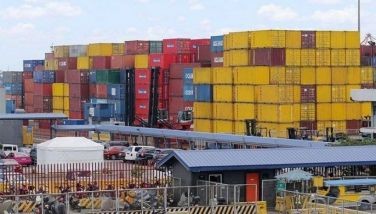Mining investments miss target in 2014
MANILA, Philippines - The country’s mining sector received investments of $693 million last year, 76 percent short of target due to the continued restrictions of the new mining policy, the Chamber of Mines of the Philippines said yesterday.
During the opening of the Mining Philippines 2015 International Conference and Exhibition in Pasay City, Chamber of Mines president Benjamin Philip Romualdez said the figure was way below the $3 billion goal.
“We need to help overcome this declining trend,” Romualdez said.
“The Philippines is lagging behind its Asean neighbors in terms of foreign direct investments. Had the big-ticket projects pushed through, we would have obtained almost $20 billion in investments, and thousands of people would have been employed, with more businesses established to meet the needs of these new mines,” he added.
Since the issuance of the new mining policy (Executive Order 79) in July 2012, the government stopped granting new mining contracts until a new taxation regime has been legislated.
Romualdez said this is opportunity wasted as prices of base metals copper, gold and nickel are seen to rise in the next four years.
“On the global scene, with Europe still struggling to recover from the debt crisis and China’s economic slowdown affecting demand for commodities, the prices of copper, gold and nickel have been steadily going down in the last two years,” Romualdez said.
“There are forecasts that prices will rise in 2019 but we only hope this will come soonest,” he added.
With the Aquino administration nearing its tailend, mining industry players are pinning their hopes on the election of new leaders to provide direction for the multi-billion peso sector.
“The election of new leaders next year should give us some optimism. We hope to have a more pragmatic vision and plan for the mining industry and a doable action plan,” Romualdez said.
The House Committee on Ways and Means is deliberating on the proposed revenue sharing scheme between mining companies and the government.
The bill filed by the Mining Industry Coordinating Council (MICC) stipulates a state share of 10 percent of a mining firm’s gross revenues or a tax of 55 percent on adjusted mining revenues plus a percentage of windfall profit, whichever would give higher revenues to the government.
Adjusted mining revenues were defined as the difference between gross sales and direct cost (direct mining cost and administrative expenses).
The new revenue sharing scheme would apply to metallic mining projects holding a mineral production sharing agreement (MPSA) and Financial Technical Assistance Agreement (FTAA).
- Latest
- Trending




























